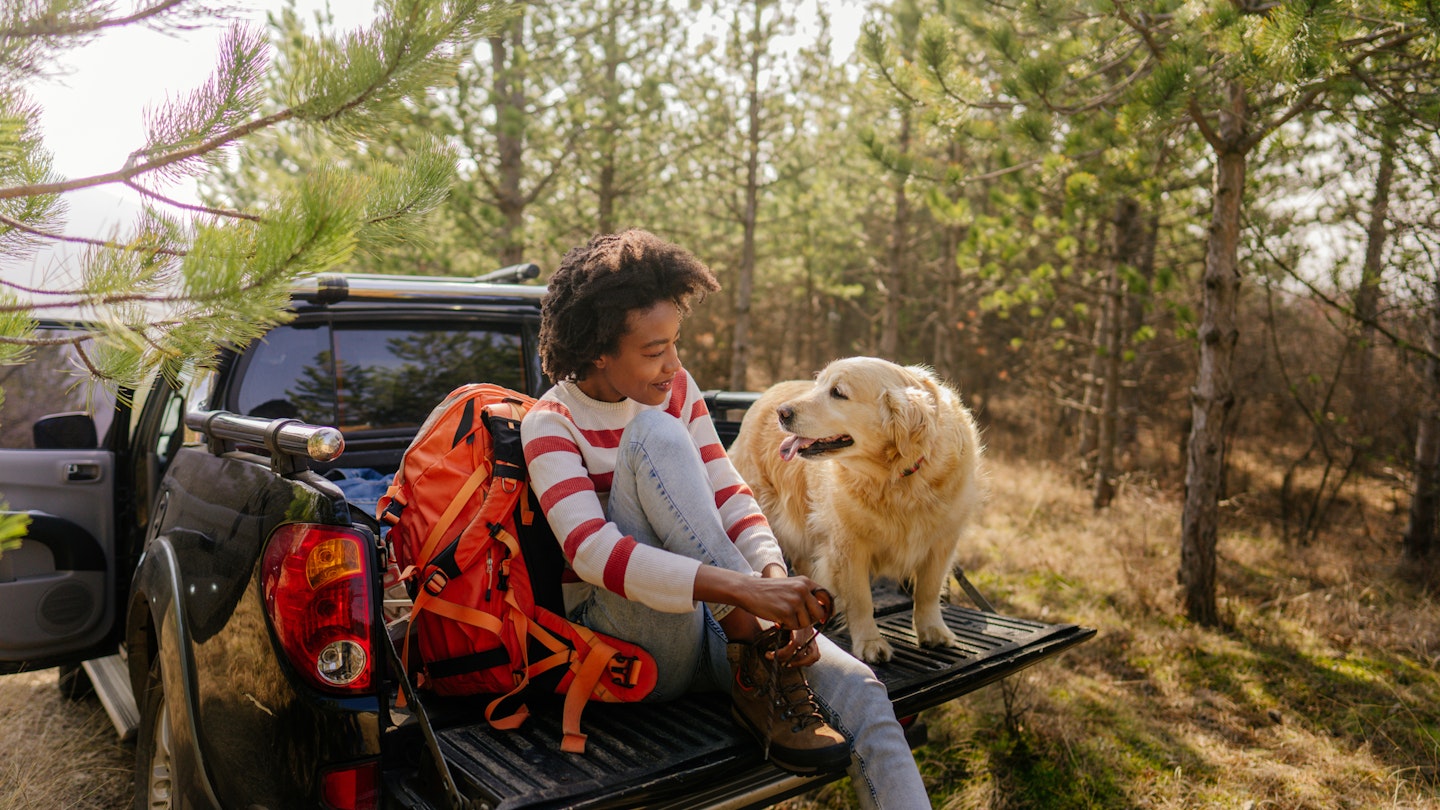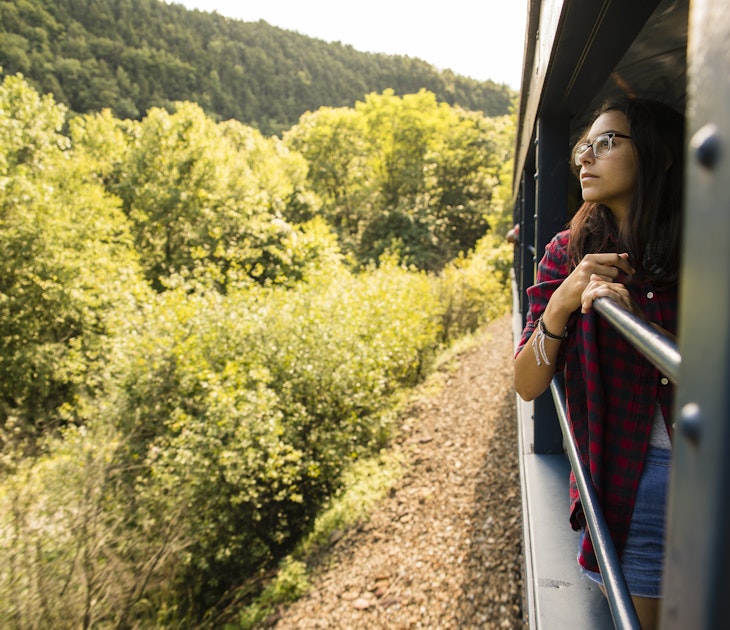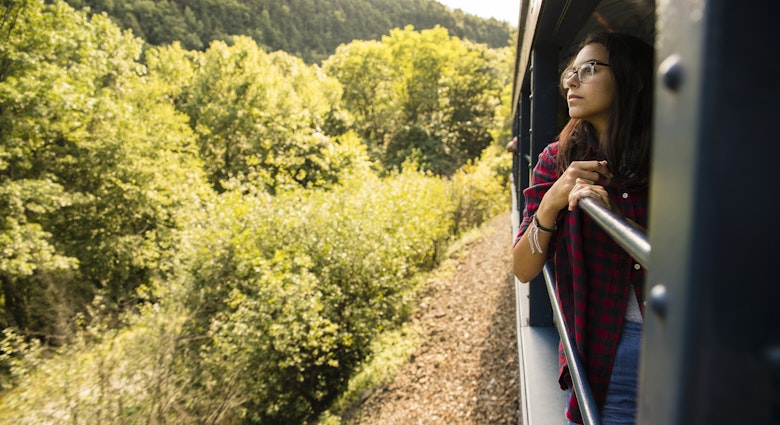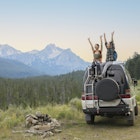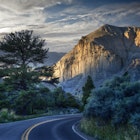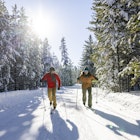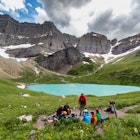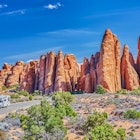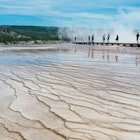In case you missed the memo, Montana is massive. It’s the largest landlocked state in the country, taking at least 10 hours to drive its width and a minimum of five hours to drive up or down.
And while it’s one of the biggest states, it’s also one of the least populated, not leaving much scope for a vast network of state-spanning public transportation options.
Having a car is the best way to explore Montana and reach its many trailheads, river accesses, and wild places. However, exploring in town is easily done without a personal vehicle.
Bike-friendly base camps like Missoula, Bozeman, and Helena are incredibly walkable and supplemented with public buses, sidewalk rentals, and multi-use pedestrian paths.
Cruising the open road with a car or van
Montana is primed for road trips and van life. And the price of car rentals reflects the demand and near necessity for personal vehicle travel. Road conditions are generally wide open on the state’s collection of paved highways, byways, and scenic routes, especially during the summer. However, cell phone reception isn’t always guaranteed, and it helps to download maps wherever you go.
While much cross-country car travel is relatively easy and uncrowded, be prepared for mountain passes, snaking river canyons, and other rugged topography, even on Interstates 90 and 15 – the two biggest arteries crossing the state. Speed limits also reach upwards of 80mph throughout rural stretches. Local drivers aren’t typically aggressive, so stay in the right-hand lane and focus on the road if you feel nervous behind the wheel.
More caution needs to be applied when pulling off the pavement onto dirt and gravel Forest Service roads. Some trailheads and outdoor destinations require four-wheel drive or high-clearance vehicles to navigate – definitely not somewhere you should take an unqualified rental. The Forest Service publishes vehicle restrictions for its listed trailheads and destinations.
The same caution should apply to winter driving in Montana, where snowfall and below-freezing temperatures can present a hazard for drivers. If you are visiting in the winter, you might already know what you’ve signed up for, but watch the weather and avoid extensive travel if a storm is coming in. Chains or four-wheel drive vehicles are required to navigate mountain passes in the winter.
Finding electric vehicle charging stations in Montana
Montana isn’t leading the charge on electric vehicle infrastructure, but the state’s capacity for electric road trips grows daily. The state has 100+ charging stations, including private and public charging ports.
Most charging stations surround cities along the Interstate 90 corridor, including Billings, Bozeman, and Missoula. The Flathead Valley, including Whitefish and Glacier, also has several spots to plug in a car.

Ride for free with city bus systems
All of Montana’s major cities have some form of low-cost or free public transportation. Fare-free buses cruise the streets of Bozeman (Streamline Bus) and Butte (Butte Bus), as they do in Missoula with the over 40% electric Mountain Line fleet – a 2021 recipient of Outstanding Public Transportation System of the Year.
Other towns like Helena and Billings offer low-fare day passes for their network of buses (Capital Transit & MET Transit). Smartphone navigation apps, like Google Maps, are useful for planning a trip on any public bus line.
Bring your bicycle (or go bikepacking)
Strap your bicycle to a bike rack or take it aboard the Empire Builder Train and explore the state on two wheels. Bikes are an excellent resource for exploring Montana’s cities and towns, with most communities catering to the gear-shifting lifestyle. Missoula, for example, enjoys a confluence of the Clark Fork River Trail, Ron’s River Trail, and the Bitterroot Trail bike paths near its downtown core.
Missoula is also home to the Adventure Cycling Association headquarters, which helps maintain a nationwide system of bicycle touring and “bikepacking” routes. And for those looking for the most adventurous way to get around Montana, the headquarters is a great launching point or end destination for an epic bicycle journey across the state.
Avoid parking nightmares with the Going-to-the-Sun Road shuttle in Glacier
Navigating the busy Going-to-the-Sun Road in Glacier National Park is a potential vacation pain during the peak summer season. This is especially true when trying to visit the famous Logan Pass, the highest point along the route, where limited parking doesn’t always bring out the best in people. The National Park System recently implemented a Vehicle Reservation System to address the congestion during the busiest time of the year.
But the best way to avoid the permits and parking headaches in summer is by hopping on the free Going-to-the-Sun Road Shuttle the park offers between July 1 and early September. An express route takes visitors straight to Logan Pass from the east or west side, while the full route makes a dozen stops between Apgar Village and St Mary Lake. Reservations are not required.
Make the most of the extensive bus network
State-spanning bus lines are limited to the services offered by FlixBus and Greyhound. But the route options connect all the state’s major cities, making bus travel a viable option for getting around Montana.
The route through the Flathead Valley spanning Missoula and Whitefish is especially efficient, with several stops and routes running daily. Intrastate bus tickets in Montana rarely exceed $100.

Chug along the tracks of the Empire Builder on Amtrak
Traveling by train in Montana is a special experience. The landscape is in full view from the observation car on Amtrak’s Empire Builder Train spanning the state's northern half – halfway along its route between Seattle and Chicago. Whitefish is the signature stop in Montana, lending access to Depot Park and the western gates of Glacier National Park.
Amtrak makes 13 stops across northern Montana, all close to the Canadian border. The 11 stops east of Whitefish access remote areas and small towns, including Havre, Glasgow, and Wolf Point – the largest community of the Fort Peck Indian Reservation. Intrastate coach fares are affordable ($40–70), and the rides are short enough to skip the need for a private car or roomette.
Avoid icy roads by taking a ski shuttle instead
Don’t book a car on your next ski trip to Montana if you don’t need to. Several of the state’s top resorts host free or low-cost shuttles from town.
Bridger Bowl provides a free shuttle from Bozeman, where skiers can also hop on the Skyline Bus for rides to Big Sky Resort. Similarly, the free Shuttle Network of Whitefish (S.N.O.W. Bus) offers several stops within Whitefish Ski Resort, and a low-cost shuttle departs Missoula for Montana Snowbowl on the weekends.
Accessible transportation in Montana
Montana has made infrastructure improvements to increase accessibility throughout its more prominent cities, including curb cuts, accessible public transportation systems, and ADA-approved construction.
So, getting around places like Bozeman, Missoula, and Helena is generally more accessible than some of Montana’s smaller towns. For adventures further afield and into nature, Ability Montana offers resources for experiencing the larger Montana landscape.
